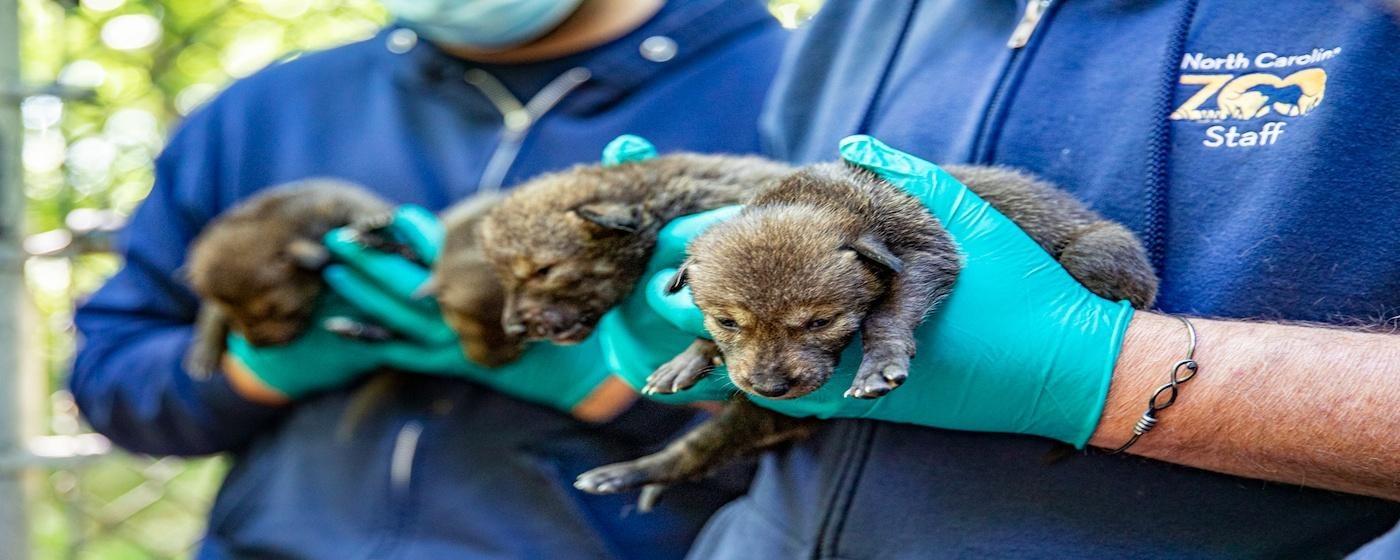Historic Births for NC Zoo’s Red Wolf Breeding Program


Three litters of critically endangered American red wolves were born as part of the North Carolina Zoo’s red wolf breeding program.
The litters comprise 12 pups that were born during three days in April 2021. All of the pups and their mothers are healthy. This is the first time in the Zoo’s breeding program that three litters were and doing well. born in one spring.
The new arrivals bring the number of red wolves currently in the Zoo's breeding program to 36. That makes the NC Zoo’s pack the second-largest pack in the nation, after Point Defiance Zoo and Aquarium in Tacoma, Washington.
In addition to the number of pups born, the births are significant because one of the litters was born on the red wolf public habitat. It’s the first time that has happened in two decades and it provides zoo visitors a rare chance to view the pups for a limited time. The pups most likely will be visible starting in mid-June, when they begin to venture outside of the den. The wolf family will be moved to the non-public breeding area when the pups are older and weaned from their mother.
The other two litters were born in non-public viewing areas of the Zoo.
“Congratulations to the North Carolina Zoo for playing an essential part in the survival of this critically endangered species," said Secretary Reid Wilson, N.C. Department of Natural and Cultural Resources. "These births are important because many of our wolves, once matured, have been moved to other breeding packs to continue to help bring this species back from near extinction. Our hope is that more and more red wolves can soon be placed into the wild."
Once common throughout the southeastern United States, red wolves were driven to near extinction during the late 1960s. But the U.S. Fish and Wildlife Service began an aggressive conservation effort – the American Red Wolf Recovery Program – that led to new ways to track and protect the species. Those efforts led to increasing numbers of wild red wolves in eastern North Carolina. However, changes in how the recovery program was managed have resulted in the wild population again dropping in recent years.
It’s estimated only 15-20 red wolves remain in the wild, and they're all found in eastern North Carolina. They're considered the most endangered canid in the world.
The North Carolina Zoo led the successful efforts to have the American red wolf become part of the Association of Zoo and Aquariums SAFE (Saving Species From Extinction) program.
Under this program, the Zoo leads in conserving the species and growing the wild population and the animals under human care.
The Zoo has been part of the American Red Wolf Recovery Program since 1994. The Zoo's red wolf pack has successfully bred 48 wolves since the program began.